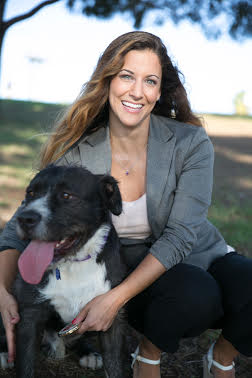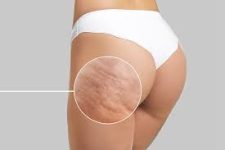Eco-Friendly Multi-Use Yard Living. Eat and Enjoy.
5 min read
How can you create a yard that incorporates drought-tolerant plants, your veggie garden and a space for you and your guests, too? I think you can have your cake and eat it too. Creating eco-friendly landscape and interior designs has taught me that you can have a beautiful, functional space that both looks great, gets use, and fits your eco-friendly standards. In this case, you can create a yard that you want to sit outside in, grow a garden in, and looks great too.
Let’s Start with Plants. Go Native.
Do away with the water-thirsty, non-native lawn and introduce natives in place of it. Incorporating drought-tolerant or native species boasts a ton of benefits. Natives bring birds, butterflies and ever-important bees that help pollinate your plants and make it feel like a sanctuary.
Creating a zone of beautiful natives in front of or surrounding your edible garden will tie your plant beds or garden area into the yard, as a whole and bring a new level of beauty to your space. If your edible garden is planted straight into the ground, creating a border zone or adjacent area of non-edibles will also help reduce wind and water erosion to the important topsoil, and provide extra nutrients to the area as leaves and matter fall into the soil and decompose.

Add Eco-friendly Seating to Enjoy Your New Space:
When your incorporating a space for seating and hosting, the eco-trend is easy to continue if you know what to look for. Consider getting outdoor furniture made from reclaimed wood.
Alternatively, there are many options online for sourcing pre-loved furniture in your style. Buying pre-loved reduces energy, water and raw materials it takes to make new furniture and ship it to you.
Lastly, look for products marketed as made from eco-friendly materials. Those throw pillows could have recycled filling inserts, or your outdoor table centerpiece could be made from recycled glass.
Start with an Eco Multi-Use Yard Game Plan:
When you’re ready to create your eco-friendly yard of your dreams, check out our example eco-friendly, multi-use yard and put this plan into action:
- First, look at the space as a whole; Think about which spots get the most light, rain, and have the best views. Jot those down, with directional indicators for north, south east and west. Make a rough sketch and include basic measurements.
- From there decide what your priorities are – do you want 10, 20, or 50 percent to be edible plants from your garden? How often do you wish you could entertain outside and does your space offer that to you now? How important is it to you to attract native wildlife and pollinators like birds, bees and butterflies to your new native plantlife? Indicate the zones you want to have: garden, plant life and landscape materials, and your functional space or seating area. Jot these down on your sketch with a basic idea of where to put them or introduce them to your existing space.
Don’t Forget the Seating…
- Incorporate your seating area by start with the ground. If you don’t have an obvious spot for outdoor furniture, ditch your water-wasting grass and create a gravel or river rock base layer in your designated space to set your chairs and table in, with plants or edging to keep the stones in place at the border.
- If you already have a concrete pad, dress it with an outdoor rug. My favorites are area rugs made from recycled water bottles. They are easy to clean and eco-friendly. Having a rug or gravel area for your seating will created a grounded and inviting look that sets the tone for the area and space.
- Address the seating. Get matching seat cushions that easily come off to throw in the wash. Nothing looks less inviting than a hodge-podge of mismatched dirty seats.
Consider the Elements…
- Consider the elements. You might need a table umbrella or shade sail to enjoy the outdoor area before getting crispy.
- Consider using paver or stepping stones or another distinct walkway to connect your seating area to your edible garden. This will tie the two spaces together and add texture and style to the space.
Oh and the plants. Consider going vertical too.
- Once these steps are planned out you can see what space is left for incorporating beautiful native plant life and landscape features like large stones or tree stumps. Start with a few species native to your area and ask your nursery staff for help considering the conditions of your yard. Start with just a few species, and ones that are more mature and easy to get established. For a more wild and natural look, plant in groupings, with odd numbers instead of rows.
- Go vertical and use your wall and fence space. Even if you have a small yard, or a concrete ground, you can incorporate style and beautiful native plants to the space by using your vertical space up walls and fencing. Don’t neglect those exterior walls! Pressure wash them so they look clean and fresh and then add stylish wall-mounted planters. Depending on the light availability, try getting plants with leaves or tendrils that hang over the edge for a lush feeling.
Lastly Declutter…
Use this spring as a jumping off point to get rid of any unused items that made their way outside as “storage” Don’t forget to donate and recycle what you can.
And Don’t Forget…
Enjoy. The more time you spend in your multi-use yard space the more creative you will become.

I am the owner and lead designer at E. Leigh Designs, a LA-based business. My passion is combining my expertise for interior design and environmental sustainability into a unique business of eco-friendly interior and exterior design.
I have been running my registered business from my homebase for 4 years, however, I work remotely with folks from all over the county. I offer 3 online, remote packages for clients with all different size needs. As a designer specializing in eco-friendly materials, and a business owner serving the 99%, my process starts with my client’s design and budget; then I look for opportunities to incorporate eco-friendly products and materials into the space, without compromising on style or quality.
My goal is to show that conscious consumerism is a beautiful thing. When I am not designing, I am lecturing environmental science or hanging with my husband Reed, and dog Hank.
Similar Posts:






